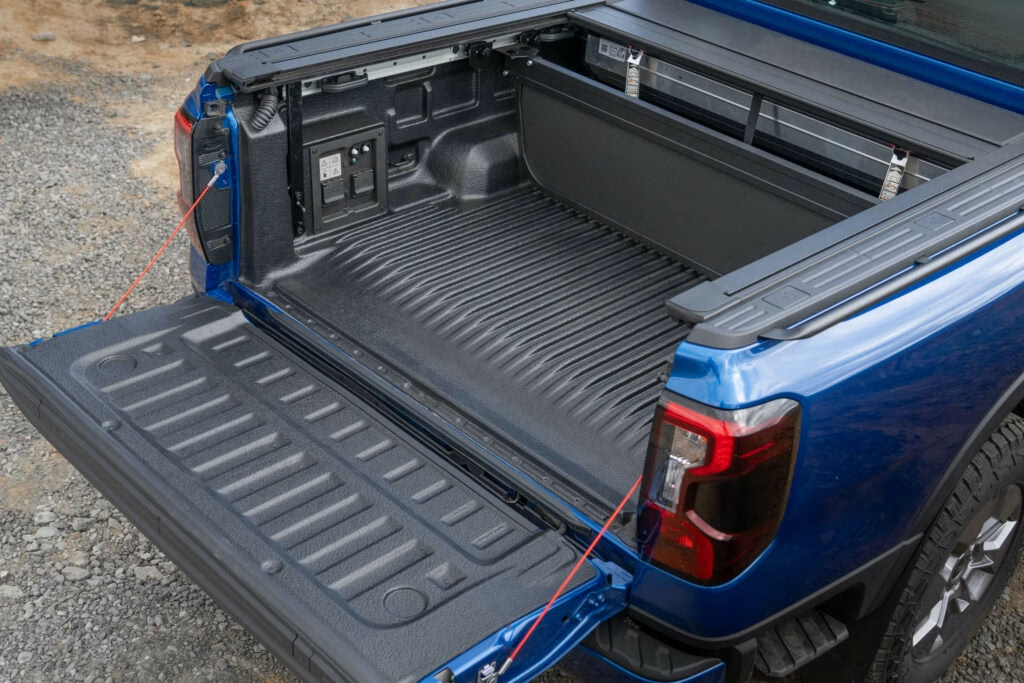How does the Ford Ranger’s Pro Power Onboard actually work?
Imagine you’re at a remote job site or deep in the woods for a weekend getaway. You need to run power tools, charge a laptop, or maybe even plug in a coffee maker. Ford’s new Ranger PHEV steps up with a clever solution: Pro Power Onboard. This system taps into the truck’s 11.8 kWh battery, letting you use it like a mobile generator. It’s a feature that’s been a hit on the larger F-150 Lightning, and now Ford is bringing that same flexibility to the midsize Ranger—especially for buyers in Europe, Australia, and New Zealand.
You get two power options: a basic 2.3 kW setup or a beefier 6.9 kW version. The higher-output system includes a 10A outlet in the cab and two 15A sockets in the bed, so you can run multiple devices at once. Need to charge a drill and keep the lights on? No problem. The system is off by default, but a quick press of the Generator button wakes it up. From there, you control the outlets through the SYNC 4 touchscreen. If the battery gets low, the truck’s engine automatically kicks in to keep the power flowing. No need to worry about draining your battery and getting stranded.
What makes Pro Power Onboard different from other plug-in hybrids?
Most plug-in hybrids offer electric driving and some fuel savings, but that’s about where the story ends. The Ranger PHEV goes a step further with bi-directional charging—a feature usually reserved for high-end EVs. This means you’re not just using the battery for driving; you’re turning your truck into a power source for tools, electronics, or even emergency backup during a blackout.
This is a big deal for small business owners, contractors, and outdoor enthusiasts. In Europe, where the all-electric F-150 Lightning isn’t available, the Ranger PHEV fills a unique niche. It’s not just about the 26-mile (42 km) electric range or the 277 horsepower from its 2.3-liter turbocharged engine. It’s about what you can do when you’re far from the nearest outlet. For many, that flexibility is worth more than a few extra miles of EV range.
How easy is it to use Pro Power Onboard in real life?
Ford designed Pro Power Onboard to be as straightforward as possible. By default, the rear cabin outlet provides 400W—enough for a laptop or small appliance. When you need more juice, hit the Generator button and select your outlets via the touchscreen. The system manages power distribution automatically, and if you’re running heavy equipment, the engine will fire up to keep everything running smoothly.
Let’s say you’re a carpenter working on a rural property. You can run a circular saw, charge your phone, and keep a portable fridge humming—all without lugging around a separate generator. Or maybe you’re camping and want to power a mini projector for movie night. The Ranger PHEV makes it all possible, with no fuss.
Are there any limitations or drawbacks to consider?
While Pro Power Onboard is a game-changer for many, it’s not without limits. The 11.8 kWh battery is smaller than what you’ll find in full EVs, so you won’t be running a construction site all day without the engine kicking in. The 26-mile electric range is also modest compared to the latest plug-in SUVs, which can sometimes double that figure. Still, for most users, the ability to power tools or gadgets on demand outweighs the shorter EV range.
Another catch: as of now, the Ranger PHEV and its Pro Power Onboard system aren’t available in the US. American buyers looking for this kind of versatility will need to stick with the F-150 Lightning or look for aftermarket solutions. Ford hasn’t announced plans to bring the plug-in Ranger stateside, and the smaller Maverick hybrid doesn’t offer this feature either.
What do experts and real-world users say about this tech?
Industry analysts have pointed out that bi-directional charging is fast becoming a must-have for work trucks and adventure vehicles. According to a 2023 report from the International Energy Agency, demand for vehicles with external power capabilities is rising, especially among small businesses and outdoor enthusiasts. Early adopters in Europe have praised the Ranger PHEV’s system for its simplicity and reliability. One contractor in Germany shared that he’s been able to leave his old gas generator at home, saving both weight and hassle.
Ford’s approach stands out because it’s integrated and user-friendly. There’s no need to fiddle with adapters or worry about compatibility—the system is built right in, and the controls are intuitive. That’s a big plus for folks who just want things to work, no manual required.
How does this fit into the bigger picture of hybrid trucks?
The Ranger PHEV’s Pro Power Onboard is part of a broader trend: trucks are becoming more than just vehicles—they’re mobile workstations, backup power sources, and adventure enablers. As more cities and countries push for lower emissions, plug-in hybrids like the Ranger offer a practical middle ground. You get some electric-only driving for short trips, lower CO2 output, and—thanks to features like Pro Power Onboard—real utility that goes beyond the daily commute.
The big takeaway? The Ranger PHEV’s Pro Power Onboard isn’t about perfection—it’s about smarter adjustments. Start with one change this week, and you’ll likely spot the difference by month’s end. Whether you’re powering up tools at a job site or lighting up your next camping trip, it’s the kind of feature that quietly transforms how you use your truck.

